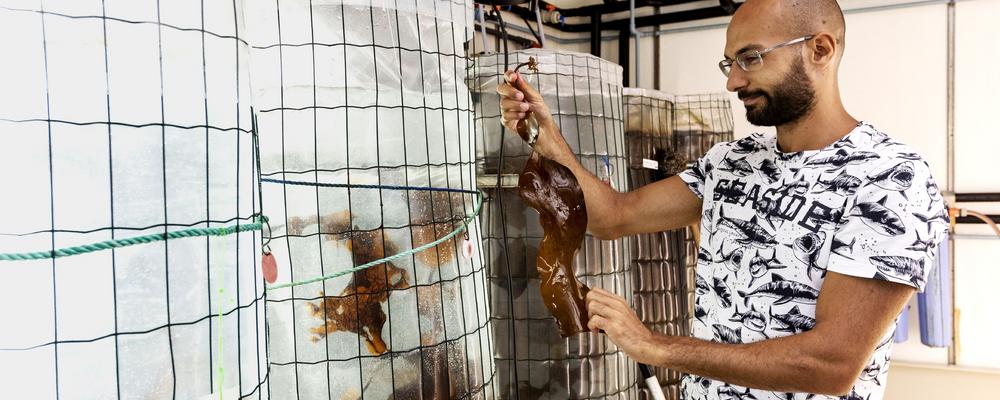– We made a pilot-scale experiment to investigate the benefits of co-cultivating fish, mussels and algae where we discovered that co-cultivation creates a win-win situation. In the future, a fish farmer can, for example, reduce the amount of nutrient emissions from his cultivation by also cultivating algae that use them as resource. While an algal farmer produces larger and better harvests with algae containing more protein and bioactive substances close to a fish farm, says Luca Rugiu, researcher at the Swedish Mariculture Research Center, SWEMARC, and at the Department of Marine Sciences.
Co-cultivation is sustainable
Today, there are no commercial co-cultivations in Sweden - and only a handful worldwide. Researchers at the University of Gothenburg have shown that co-cultivation can be a more sustainable way of growing food from the sea.
- Co-cultivation minimizes the negative impact of fish farms on the environment, where cultivated algae absorb dissolved nutrients, such as nitrate and ammonium released by the fish farm. While the filtering mussels absorb the nutrients that are bound in particles from the water, says algae researcher Luca Rugiu.
This study showed that the availability of nutrients in the water gave a photosynthesis a boost to the algae, which in turn increased the amount of biomass produced.
- By measuring photosynthesis, researchers can study how the algae feel and develop, a research area that is currently underdeveloped. It is as if fish farmers would ignore how much the fish eat and what kind of feed the fish prefer, says Luca Rugiu.
Algae on the Christmas smorgasbord
Growing algae as food is nothing new, it has been done for thousands of years in Asia and South America. Now the trendy superfood, which contains nutrients such as minerals and antioxidants, has begun to have an impact in Sweden. Maybe also on the Christmas smorgasbord?
- Absolutely, I like to occasionally eat crispy sugar kelp, which has been dried in the oven. But I also like to eat fresh sugar kelp and I sometimes do that when I'm out snorkeling. It tastes delicious, says Luca Rugiu.


